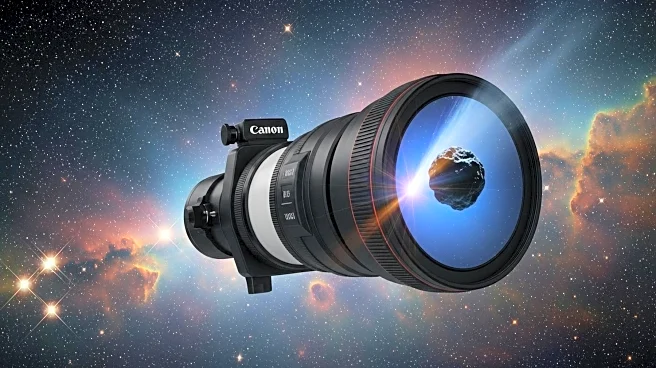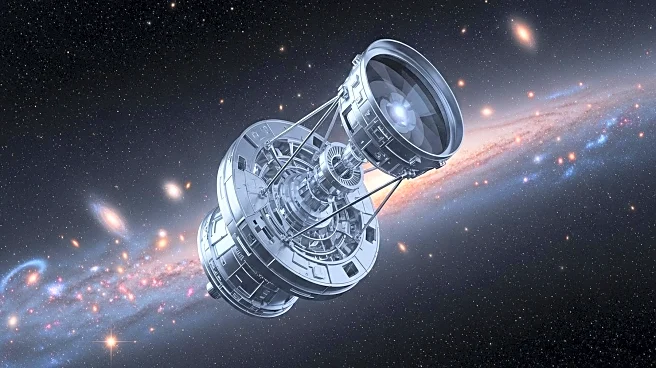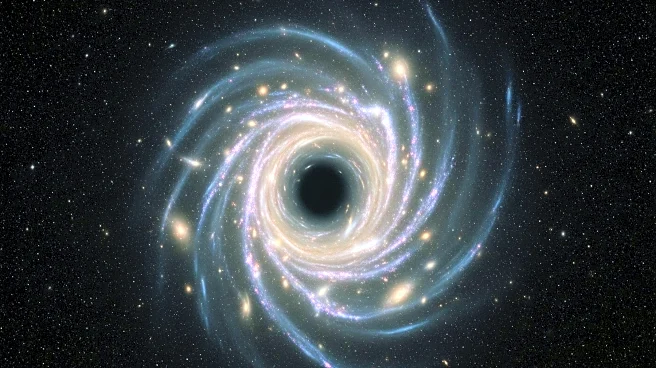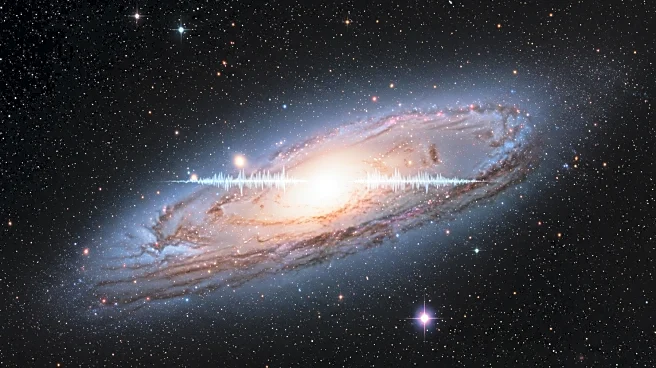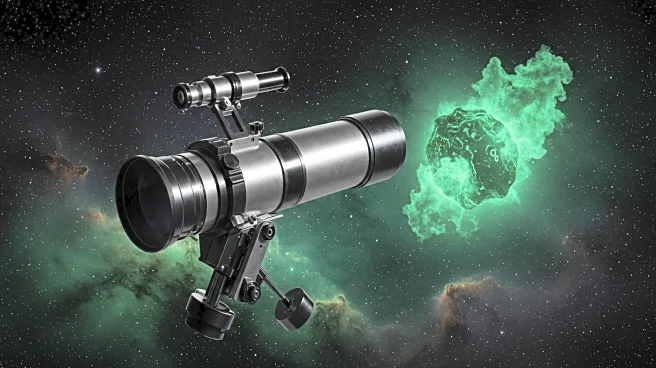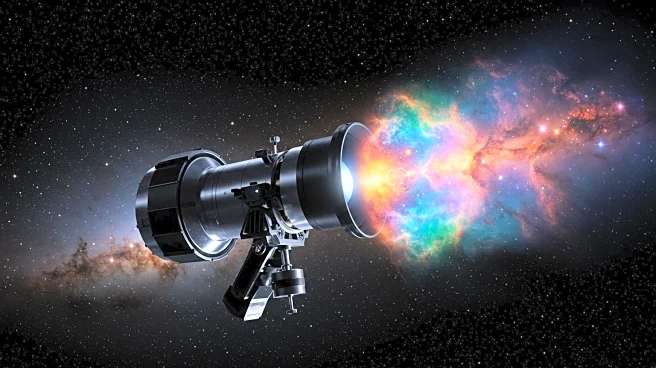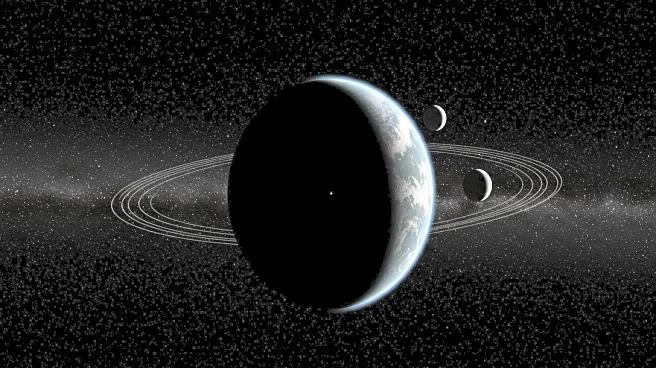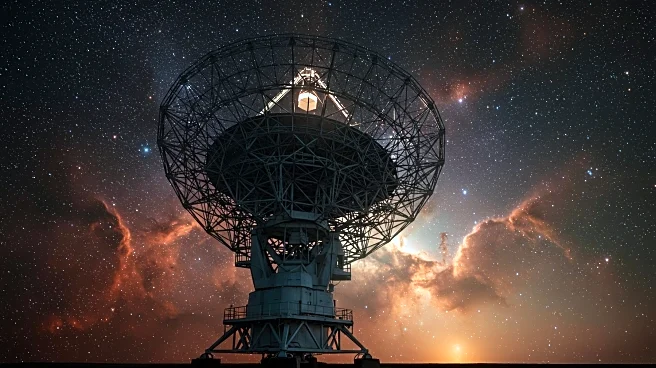What's Happening?
The James Webb Space Telescope has provided detailed observations of the interstellar comet 3I/ATLAS, revealing unexpectedly high levels of carbon dioxide. This discovery suggests the comet may have formed in an environment unlike our solar system. Observed since July, 3I/ATLAS is traveling through the solar system at high speed. The telescope's infrared images show a coma with a carbon dioxide to water ratio of 8:1, significantly higher than typical comets. This finding indicates the comet's origin may involve unique planetary formation conditions.
Why It's Important?
The high carbon dioxide levels in 3I/ATLAS's coma could imply that the comet formed in a planetary system where carbon dioxide ice was more prevalent than water ice. This discovery challenges existing theories about comet formation and suggests variations in planetary system development. Understanding these differences can provide insights into the diversity of star systems and the processes that govern their formation. The research also highlights the capabilities of the James Webb Space Telescope in studying distant celestial objects and advancing our knowledge of the universe.
What's Next?
Further analysis of 3I/ATLAS will continue as it moves through the solar system. Scientists aim to understand the implications of its unusual composition and explore the possibility of other interstellar comets with similar characteristics. The findings may lead to new models of planetary system formation and influence future astronomical research. Continued observations by the James Webb Space Telescope and other instruments will be crucial in uncovering more details about the comet's origin and behavior.


